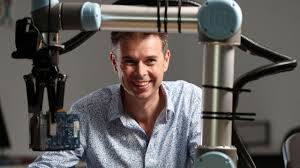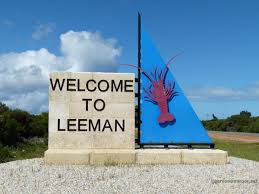By Hans Overberg
Franciscus Nicolaas Leddy (1903-1964), company director, was born on 20 April 1903 at Rotterdam, the Netherlands, son of Franciscus Nicolaas Leddy, director of prisons, and his wife Cornelia, née Delabrie. Educated at Leiden high school and the Nederlandse Economische Hogeschool, Rotterdam, young Leddy began his professional career in 1929 in the export department of Philips’ Gloeilampenfabrieken at Eindhoven. On 22 August 1928 at The Hague he had married Johanna Philippine Nagelkerke; they had one son before being divorced in 1931. Leddy’s second marriage also ended in divorce. After serving as manager (from 1933) of Philips Vienna, he was transferred to Cairo in 1938 as managing director of Philips Orient. World War II brought out the improviser in him: he established a workshop which employed Arab boys and wounded Australian servicemen whom he trained to make direction-finding loops for the soldiers, using scrap material from aircraft that had been shot down near Tobruk. In May 1942 he was promoted governing director of Philips Lamps (Australasia) Pty Ltd. At St Stephen’s Presbyterian Church, Sydney, on 31 December 1945 he married Gertrude Kay Lamond, née Brookes, a 21-year-old divorcee.
On reaching Sydney, Leddy had found a curious collection of Philips’ plants scattered throughout New South Wales to manufacture and assemble electronic communication equipment. The opportunity to consolidate and expand came late in 1945 when he bought the old munitions factory at Hendon, Adelaide, at a bargain price. In the following year he shifted all Philips’ operations to the Hendon site, which was opened on 21 April 1947 by the premier (Sir) Thomas Playford. By 1956 some 3200 workers were employed there. Philips’ expansion prompted other industries to set up in Adelaide.
Leddy diversified Philips Electrical Industries Pty Ltd. The first experimental television transmitter in Australia was built at Hendon in 1955. By mid-1956 the first locally made Philips television receivers were marketed, heralding the introduction of television. Leddy became a technical adviser to the Federal government on television issues and was a director of (Sir) Frank Packer’s Television Corporation Ltd (TCN-9, Sydney). He was also a key figure in bringing the first frequency modulation broadcasts to Australia in the late 1950s. Under his leadership Philips’ engineers successfully completed the coaxial cable between Sydney and Melbourne in April 1962. Prominent in industry, Leddy was a life governor of the Sydney division of the Australian Institute of Management, and a councillor of the New South Wales Chamber of Manufactures and of the Nuclear Research Foundation, University of Sydney. In 1953 he had been appointed to the Order of Oranje-Nassau.
Although his health was never strong, Leddy cut an imposing figure. He was the prototype of the authoritarian manager, arousing deep feelings either of loyalty or antipathy in those he met. Individuals with the courage to stand up to him often earned his respect. On the evening of 24 August 1955, as he was leaving his Sydney office, he was shot in the arm and chest by an unknown assailant; the gunman was never found. Leddy had some of the hallmarks of the European homme civilisé. He was fluent in five languages, he collected paintings and antiques, and he had an abiding interest in music and photography. His skills as a gardener were legendary: in 1958 his garden at Pymble won first prize in the open section of the Sydney Morning Herald competition. He belonged to the Royal Sydney Yacht Squadron, and to the American National and Killara Golf clubs.
Leddy left Sydney on 13 June 1962 to take up the presidency of the Philips’ group in Italy. He died on 23 June 1964 at Milan and was buried at Eindhoven, the Netherlands. His wife and their two daughters survived him, as did the son of his first marriage.
Source: Australian Dictionary of Biography
See also:
Philips Electronics Pty Ltd was the largest company from The Netherlands in Australia
Philips factory in Newcastle produced almost all Australia’s electric lamps for 70 years
Herman Diederik Huyer Managing Director Philips Australia
More than 150 Dutch companies established subsidiary operations in Australia
Dutch involvement in the Sydney Opera House
The University of Newcastle has 500+ photos related to the company.


